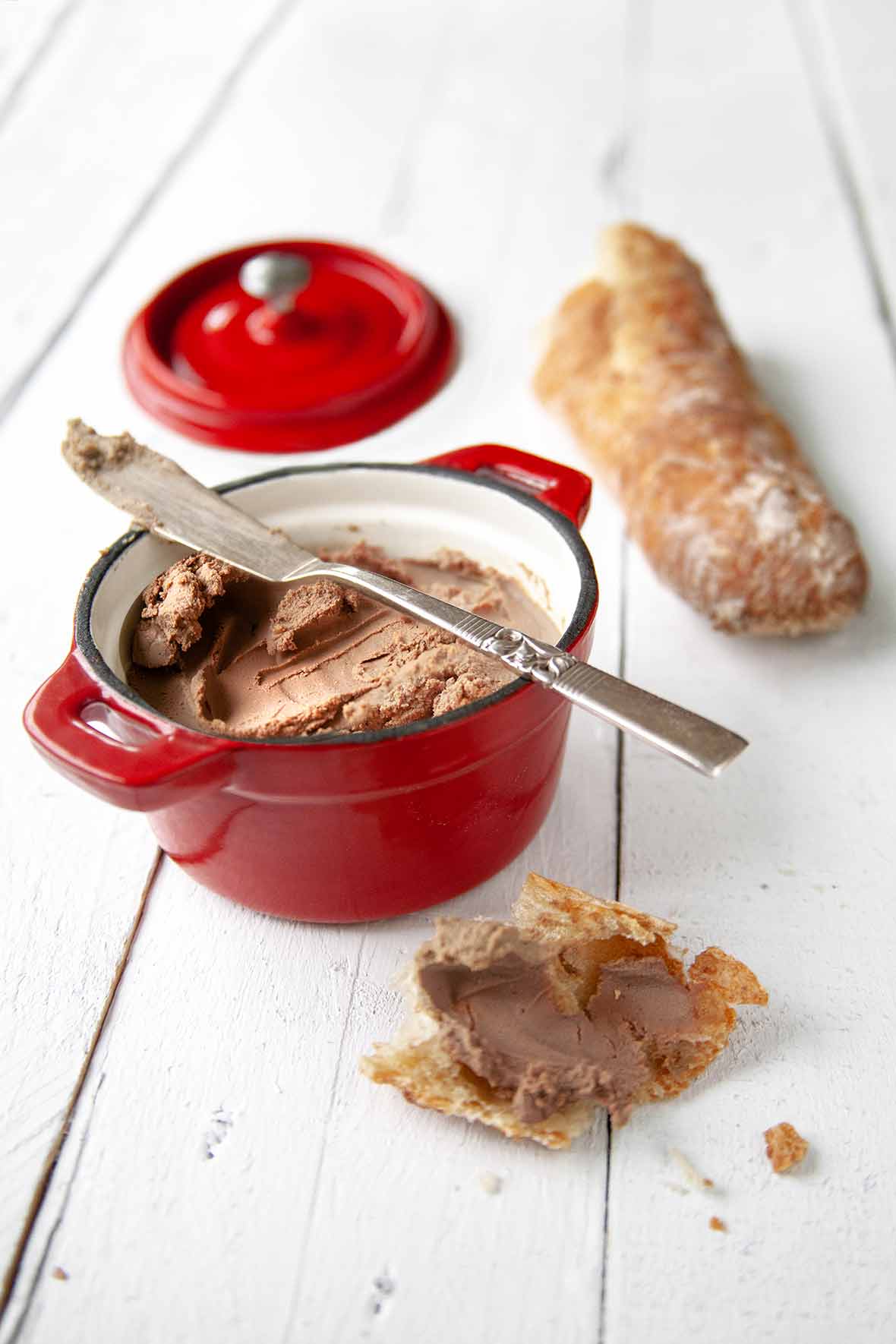
This easy chicken liver pâté turns simple, everyday ingredients into a sophisticated, elegant spread that’s satiny smooth and ridiculously rich. Shallots, thyme, butter, and Cognac combine with chicken livers into a creamy goodness that’s begging to be smeared on some rustic white bread or toast points as an impressive hors d’oeuvres or a simple winter supper. Best when served with a generous pour of riesling. It also makes a lovely gift when stashed in a small crock, although I won’t judge if you want to save it for yourself.

Why This Recipe Works
This recipe nails the essentials of a classic chicken liver pâté. Cooking the livers to just pink locks in flavor and preserves their creamy texture, while shallots and brandy lend depth and complexity. A generous amount of butter ensures a luxurious, melt-in-your-mouth consistency.
The optional clarified butter topping is a chef’s trick, sealing out air to naturally preserve the pâté for longer storage. (Yeah, good luck resisting this silky spread long enough to test that theory!)
Helpful Tips
- Cook the livers just until browned on the outside but still pink inside—overcooking will make your pâté grainy instead of smooth and creamy. Slice into one to check doneness if needed.
- For the smoothest pâté, lean on the food processor’s button for several minutes, and, for ultimate texture, push the mixture through a fine sieve.
- When adding brandy to the hot pan, STAND BACK to avoid any flare-ups! The alcohol needs to reduce by half to concentrate the flavor.
- Covering the pâté with clarified butter creates an airtight seal, keeping it fresher for up to a week while adding an extra layer of richness.
VIDEO: How to Make Chicken Liver Pate
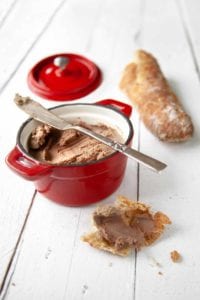
Easy Chicken Liver Pâté
Ingredients
- 1 tablespoon plus 2 teaspoons mild oil, such as grapeseed (or substitute unsalted butter)
- 12 ounces fresh chicken livers, rinsed (about 15 to 20)
- 1 1/2 ounces shallots, finely chopped (about 2 French shallots or 1 medium shallot)
- 1/4 cup brandy, preferably Cognac
- 1 to 2 teaspoons chopped fresh thyme leaves
- 10 tablespoons unsalted butter, softened, plus more as needed (or, if keeping kosher, substitute chicken fat or margarine)
- 1 teaspoon kosher salt, or to taste
- 1/2 teaspoon freshly ground black pepper, or to taste
- crusty white bread, to serve
- 1 stick unsalted butter, (optional)
Instructions
- In large skillet over medium–high heat, heat 1 tablespoon oil. Fry the 12 ounces fresh chicken livers, turning the livers occasionally and lowering the heat as necessary, until browned on the outside and still pink on the inside, 3 to 5 minutes per side, depending on the size.
☞ TESTER TIP: Be careful not to overcook the livers or your pâté will be grainy. Go ahead and slice into a liver to check for doneness.
- Transfer the cooked livers to the bowl of a food processor and return the skillet to the stove.
- Add the remaining 2 teaspoons oil along with the 1 1/2 ounces shallots and cook over medium-low heat until the shallots have softened, about 3 minutes. Add the 1 to 2 teaspoons chopped fresh thyme leaves to the skillet, and then carefully pour the 1/4 cup brandy into the skillet.
☞ TESTER TIP: 🔥Use caution and stand back as you slowly and carefully add the brandy to the pan. The alcohol may ignite and flare up but will die down.
- Continue to cook until the alcohol has reduced by half, about 3 minutes.
- Scrape the contents of the skillet into the food processor along with the chicken livers, add the softened 10 tablespoons unsalted butter to the food processor, season with the 1 teaspoon kosher salt and 1/2 teaspoon freshly ground black pepper, and give it all a good whiz until it’s smooth. This could take up to 3 minutes. Taste the pâté and, if desired, add more brandy, thyme, salt, or pepper.
- To give the finished pâté a velvety texture, use a spatula to push the mixture through a very fine sieve or, for a more rustic texture, omit this step. Transfer the pâté to a ceramic or glass bowl.If you prefer to devour the pâté straight away, spread it thickly on a piece of crusty white bread, such as a sliced baguette.If you prefer to use it within 24 hours, cover and refrigerate it for later.If you want to enjoy the pâté up to 1 week later, slowly melt 1 stick unsalted butter in a small saucepan until the golden liquid and the white milk solids separate from the liquid. Pour the golden clarified butter onto the pâté, leaving the milk solids in the pan. The pâté must be totally covered by the butter so that it’s airtight. Cover and refrigerate for up to 1 week.
Notes
- Don’t overcook the livers—Sear them until just pink inside for the smoothest texture.
- Flambéeing—When adding brandy to the hot pan, STAND BACK to avoid any flare-ups!
- Storage—Covering the pâté with clarified butter creates an airtight seal, keeping it fresher for up to a week.

Nutrition
Nutrition information is automatically calculated, so should only be used as an approximation.
Recipe Testers’ Reviews
This is an earthy and delicious version of chicken liver pâté. The perfect hors d’oeuvre with a glass of Riesling. The livers took 5 minutes per side and I did cut into one to make sure it was still pink inside. I tasted the pâté after whizzing it in the food processor and added an additional 1/2 teaspoon salt. I did not push the mixture through a very fine sieve–we enjoy the rustic texture instead of a velvety texture. We enjoyed our pâté with toasts after chilling it for 4 hours so I didn’t top it with clarified butter. This pâté could either be an elegant hors d’oeuvre or just enjoyed simply with a glass of wine.
How could anyone NOT try this chicken liver pâté recipe? Really, chicken livers blended with a ton of butter and Cognac? How could this not be good? Well, I made it, we ate it, and it was amazing. Creamy, flavorful, and just plain delicious on a great chunk of bread.
It was my first time working with chicken livers so there was a learning curve involved but it was worth it! After the chicken livers were in the pan for 1 minute I began to turn them and realized that they were cooking very quickly! I removed the pan from the flame to test one and felt that it was beyond pink but not “well done.” I ended up cutting into every liver and all but a couple were “done.” I left the two in the pan to continue cooking with only the residual heat and that worked fine. Finally I was ready to watch the miracle of food processors happen. And it did. After about 3 minutes, I stopped to taste and adjust. Salt and pepper were fine but frankly, the Cognac needed a little adjusting. I added another 2 tablespoons and processed another minute. The flavor was perfect but there were bits of the browned parts of the liver that had not incorporated into the paste. I poured all the mixture into a fine sieve and worked it through with a spatula. The final product was perfect.
I was able to fill (well, almost fill) three, four-ounce Mason jars and one more about hlfway full. The half full one was gone in 30 minutes and the other three have been topped off with the clarified butter and are waiting their turn to be devoured. I had hoped, if the recipe turned out well, that these cuties would become hostess gifts but that won’t happen. I’m not a nice person.
If chicken livers are your thing, you will like this chicken liver pâté recipe. It was quick and easy to make. I packed the pâté into three 4-ounce jars and covered them with rendered duck fat instead of butter. (I know what you’re thinking–who has duck fat in their fridge? I happened to have a jar in my freezer because I had made cassoulet several months ago. So this was a perfect use for this, otherwise topping with clarified butter is the thing to do.)
This makes a lovely gift along with a small jar of cornichons and crackers. In fact, this is what I gifted a friend for a recent birthday. I saved one in my freezer for future use and then still had one left for snacking. If you happen to have a small jar of bacon jam lurking in your fridge, there is no better way to serve this pâté than with toasted baguette slices and a smear of bacon jam. (Again–I know what you’re thinking–who has duck fat AND bacon jam lurking in their fridge? All I can tell you is that it was a perfect storm!)
I used Grand Marnier instead of brandy since my liquor cabinet was devoid of brandy. Other worthy substitutions could include port, Marsala, or Madeira instead of brandy. I added the booze and within 30 seconds it had flamed and reduced to almost nothing. I did strain the pâté in order to achieve a fine texture but I don’t think it’s totally necessary. You will experience a loss in volume if you do strain it. I ended up with three 4-ounce jars of pâté.



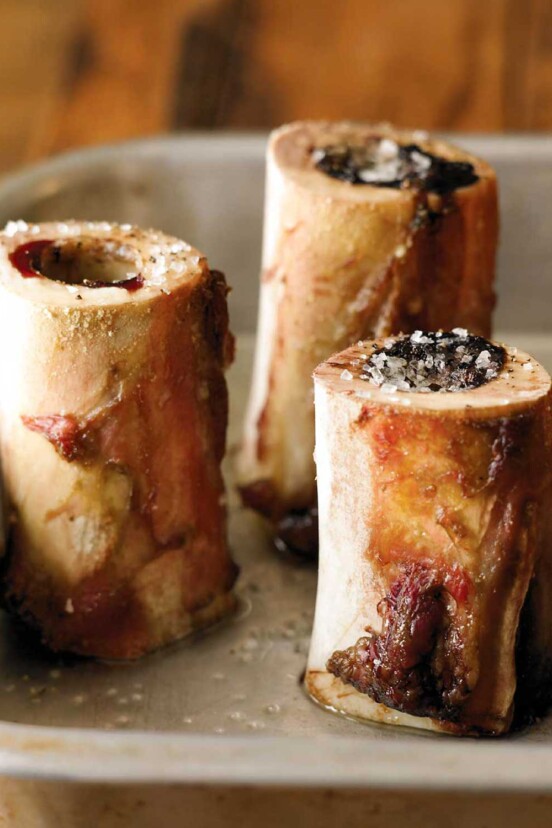
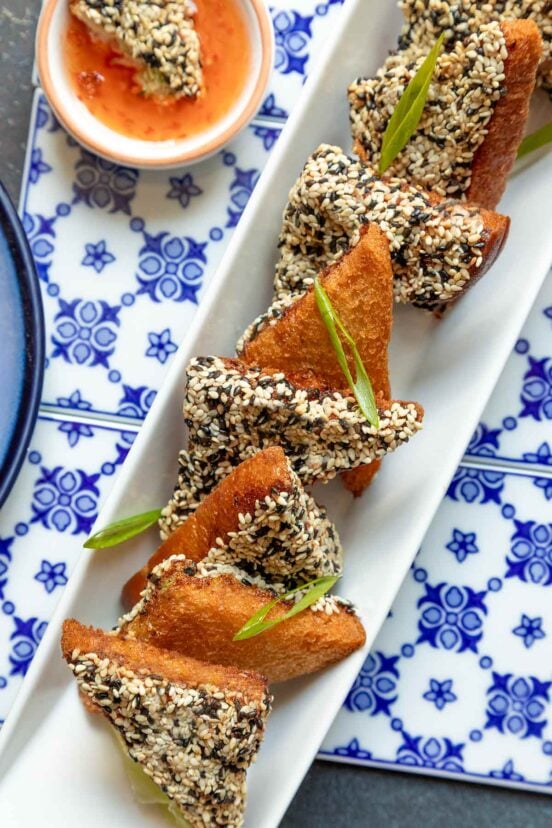
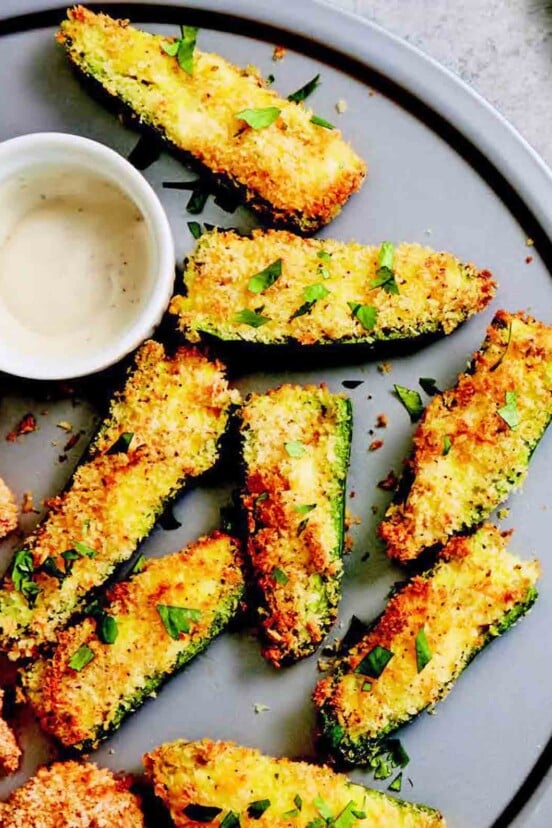









I’ll bet this is delicious. But seriously, BUTTER with chicken livers for ROSH HASHANAH??? I’ll be making mine with schmaltz, because, you know, KOSHER RULES!
Thank you for the suggestion to cover it with a layer of fat. That I will be doing, with CHICKEN FAT, aka schmaltz.
Ellen T., you’re right, of course. Over the last two decades, I have heard from many readers who celebrate Jewish holidays that they don’t always keep kosher but still appreciate the traditional recipes, which led to my thinking it would be okay to include that recipe in the grouping of Rosh Hashanah recipes. But you’re right. I should have respected those who keep strictly kosher. My apologies and my appreciation to you for calling me out on that. Wishing you a wonderful new year and I hope you do enjoy the recipe made with schmaltz.
I made this for Xmas – subbed vermouth for brandy. Served it with toasted baguettes. It was delicious!
Magnificent, Martha! Both the substitution and that you liked it so! Wishing you and yours all the magic of the season…!
Do you really need to add the liquor?
Delma, the brandy does add to the depth of flavor here but if you don’t want to add alcohol to your pate, you can omit it. You could use some chicken stock or water in its place if you like.
This pâté couldn’t be easier or tastier. My Thanksgiving guests gobbled it up. (Sorry, couldn’t help myself!) Using a fine strainer really put this over the top–elegant and creamy. We’ll be making this again for Chrismas Eve dinner.
Tuck, that sounds great. And I think your Christmas Eve guests will be quite lucky!